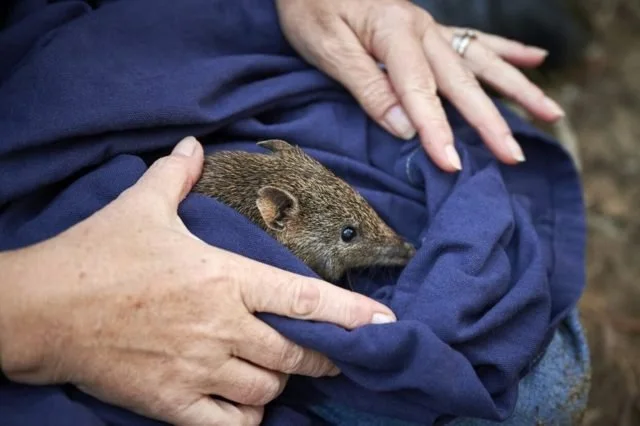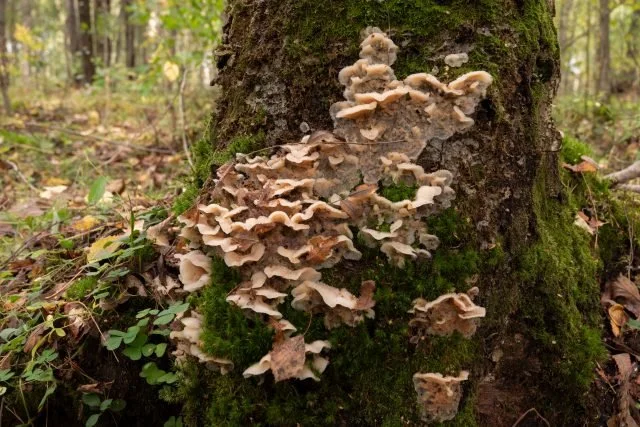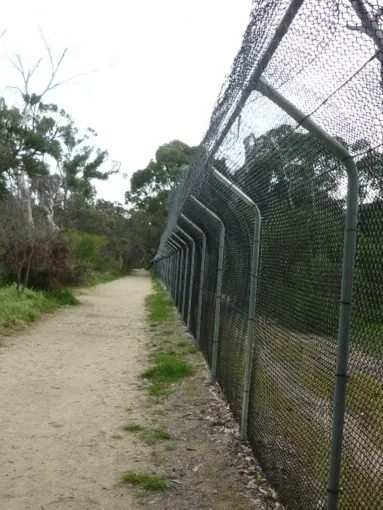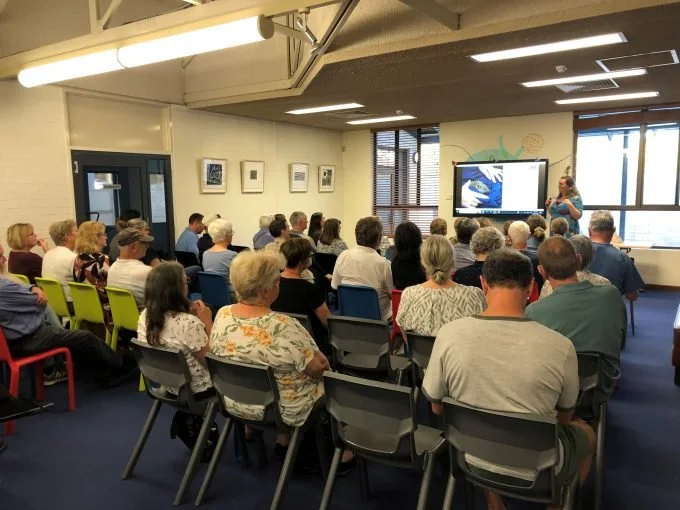Resupinate fungi (also known as paint fungi) decaying a tree stump
We had a chat with Dr Anna Hopkins, Edith Cowan University (ECU) senior lecturer in conservation biology and environmental science, to talk about her brilliant conservation work not only on the ground, but also inspiring our future leaders and researchers.
Leading our future conservationists
Dr Anna Hopkins has been a teaching and research academic at ECU for eight years, where she has been studying fungal ecology, plant pathology and conservation biology.
Anna teaches and inspires undergraduate biology and environmental management students in genetics, ecology, soil science and plant pathology units. She also supports and supervises postgraduate research students with their conservation projects.
Her classes use a variety of different tools to engage students and provide a hands-on learning experience. Anna’s classes not only engage industry partners in research but also include field trips, lab work and computer-based programs to help students get the most out of their learning. Some of the student field trips take place in the City’s incredible natural areas.
Putting the fun in fungi
Fungi play a critical role in our ecosystems, and Anna’s work is helping us understand more about these amazing organisms. Without fungi, we wouldn’t have healthy forests or food for our mycophagous (fungi-eating) animals.
As a big fan of fungi, we asked Anna to share her favourite fungi with us that grow locally. Anna shared that her favourite fungi are paint fungi, a group of decomposer fungi also known as resupinate or skin fungi. They don’t grow on your skin though.
You might see paint fungi growing on dead and dying wood in our forests, their fruitbodies look like paint or a layer of skin. They don’t just look pretty though, paint fungi help to decay the wood faster, making it a home for beetles, weevils and larvae, who all work together to decay the tree and return its nutrients to the forest floor.
Craigie Bushland’s Quendas
Not only does Anna do an amazing job in her fungi research and teaching, but she has also been running a quenda monitoring program in Craigie Bushland. The monitoring program initially commenced in 2013, when a fenced fox and cat-proof enclosure was installed by the City. ECU and Anna have been leading the program since 2020.
This program is run twice a year alongside Dr Harriet Mills who works at Perth Zoo (Science Program). The program checks on the health of the quenda population, to estimate numbers and to improve understanding of the biology and ecology of quenda.
Since the program began 10 years ago, quenda numbers have grown to about 100 individuals inside the enclosure. The monitoring program has also resulted in us having a better understanding of what quenda eat and how they respond to climatic fluctuations such as droughts and heatwaves.
Ecosystem engineering
Quenda are a species of mammal that dig for food like earthworms, termites and bulbs in the soil. One quenda is able to turn over more than 3.9 tonnes of soil each year.
Quenda loves to eat underground fungi that produce truffle-like fruitbodies, and while this is a delicious meal of truffle fungi for them, they are also able to distribute more fungi spores around the bushland with their droppings.
These truffle-like fungi are so important for the roots of native trees such as eucalypts, as they help these trees grow by passing on water and nutrients. Therefore, while the quenda are digging and eating, they are helping to keep our native trees healthy.
Local bushland areas like Craigie Bushland are so important to help preserve our local wildlife. Since the installation of fox and cat-proof fencing, the quenda population in Craigie has been thriving. If you want to see a quenda at Craigie Bushland, they are more active at night. It is possible to see them during the day if you are lucky, and you can certainly see their diggings around the bushland.
Quenda Discovery Session
On Wednesday 25 October 2023, Dr Anna Hopkins presented a Discovery Session on quenda, educating over 40 attendees about our local ecosystem engineers who disperse seeds, maintain soil health and help to decrease fire risks.
Community members learned how to identify quenda, their threats to survival, findings from the Craigie Bushland quenda monitoring program and how to protect and encourage quenda in their own gardens.
The session received a 92 per cent high satisfaction rate, with many positive comments about how much community members learned from the session.
Get involved in conservation
Anna has the following tips on how to get involved and help out to protect our bushland areas so that quendas and fungi can continue to keep our natural areas healthy:
- Get involved in your local bushland area through a Friends Group, or through community groups like Naturalist Clubs and the Wildflower Society.
- Get weedwise and protect our bushlands from weeds by learning about the City’s Environmental Weeds and Garden Escapees.
- Create your own wildlife friendly gardens to provide quenda important habitat. Learn more through ReWild Perth – Quenda.
- Be a responsible pet owner by keeping your dogs on leads and out of prohibited areas, but also keeping your cat inside so that they can’t harm native wildlife.
- Participate in citizen science and record your quenda sightings through ALA iNaturalist Australia or the WWF’s Spring Quenda Count.
- Get outside and enjoy our natural areas, Parks and Reserves. We are lucky to have these areas for both conservation and recreation.





-and-Dr-Harriet-Mills-(right)_jpg_992_426.webp)
